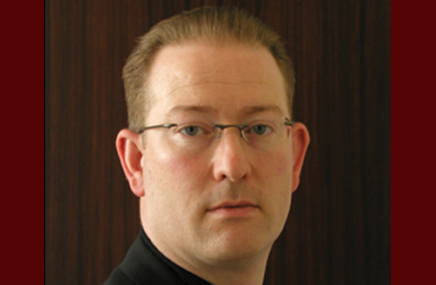Despite the lack of appeal that being part of a holding company might have for some agencies, DDB Health Group’s president Mark Goldstone makes it sound like a party that’s just waiting for a leader. For him, that means picking up “quite a lot of business” over the last 6 to 8 months, a feat that includes landing a rare diseases account from drugmaker GlaxoSmithKline. Understated but enthusiastic, he described this win as something “I thought was really nice.”
Although he declined to name names with dollar signs attached, he said his division represents 10% of the business for DDB, which is part of Omnicom. As vast as Omnicom is, he categorized the deep network as an opportunity to leverage a massive amount of talent, and a value proposition that gives clients one place where they can really launch and market their brands with an agency of proven worth.

The work still flows in, particularly for the Asian markets, and his talent pool is staying busy with accounts for such clients as Johnson & Johnson, Pfizer, Novartis and Bristol Myers. And that talent pool is what Goldstone says makes his division tick: in addition to tapping into the broader DDB network’s 900 employees, Goldstone says DDB doesn’t stick to a healthcare-consumer divide. Instead, his agency swaps talent between the two sides so healthcare can learn best practices from consumer advertising and vice versa.
“If you’re just working in a healthcare agency dealing day in and day out with your pharma work and that’s all you see, that feeds your environment,” he explained, saying his division started the transition first by just plopping creative staff from both sides of the divide next to each other. (“Just by providing an environment where people see different ideas… it give you more ideas,” he said.) Then he started to bring the non-pharma staff into healthcare assignments.
Goldstone said it was essential to bring non-pharma folks into healthcare communications, because a sales rep and a packet of scientific information is not enough to get face time with a doctor, let alone win over payers who are heavily focused on getting the most out of the cost-benefit equation. That ability to persuade, he said, comes from taking the best of consumer marketing and funneling it into the healthcare channel. He said that DDB’s talent-swapping created the type of creative support the industry needs. And that’s part of what he says is an even bigger industry need: old-fashioned branding that justifies the higher price.
Goldstone said this is a significant change for an industry that has been able to lean on science as its selling tool. He told MM&M that the industry is slowly getting comfortable with viewing the sales rep as “just another media channel,” even if they are skirting the general marketing terminology in which the non-pharma world revels. “A client recently said ‘we’re starting to look at other things . . . not personal selling’ and I said ‘do you mean advertising?”
He said part of this change is helping clients move from a sales support perspective towards a marketing approach, and said that tighter times are making the industry more open to digital outreach. Unable to divulge how much clients are putting towards digital, he said that a sign of change is that the clients are now advising the agency that “we’ve got this brand and we’re not going to put any reps behind that.”
As for the issues of patent cliffs and advertising regulations, Goldstone is confident that his agency is ready to help clients tackle whatever is coming next. “The business is never going away, because we’re all sick,” he said.
From the July 01, 2012 Issue of MM+M - Medical Marketing and Media








